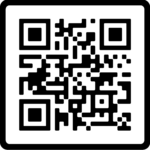
Scan here to claim your reward; scan to pay; scan here for the menu; scan to connect to WiFi; scan here to enter your information; scan here to access the store; scan here for instructions on how to use your microwave; scan to donate; scan to get the app; scan for my Venmo information. To paraphrase Dr. Seuss, “From there to here, from here to there, [QR codes] are everywhere!”1
As I was working on the ACAMS Today Assembly edition, I experienced the Baader-Meinhof phenomenon. The cover article is all about quick response (QR) codes and as I went about my daily activities, I started to see QR codes everywhere―and I mean everywhere. I saw them in the show I was watching, on my social media, while I was out to dinner, at the store as an easier way to pay and as the ticket to the event I was going to attend. I used a QR code to schedule a doctor’s appointment. Finally, I downloaded my e-ticket for a flight in the form of a QR code to board my plane. I soon started looking for what else I could do using a QR code. However, as I went about these various activities, I had the worrying notion in the back of my head: “What if this is fraud? Is this a legitimate QR code?”
QR codes have become commonplace, even more so post-COVID-19, but QR fraud was never on the top of my list when thinking about fraud―maybe it should be. The authors of “Scanned and Scammed: QR Code Fraud” have outlined how criminals exploit the ease of QR codes for their nefarious ends. While criminals cannot change the binary code within a QR code, they can do other things, such as replace a real QR code with a fake one. Some of the advice for financial institutions to prevent fraud shared in the cover article includes applying biometric securities to QR codes as well as encrypting the information shared via a QR code.
Many of us are feeling the pressure of doing more with less. In the article “Maximizing AFC Success on a Tight Budget,” we learn that “strategic planning, operational efficiency and leveraging available resources effectively” in the following areas is key: risk-based approach, regulatory compliance and data-sharing and IT integration.
The next cover article is timely as we will reunite in Las Vegas for our annual Assembly, where hundreds of anti-financial crime (AFC) professionals converge to learn more about the AFC landscape. A longtime ACAMS member and resident expert shares how a quantitative approach to determining inherent risk in a casino risk assessment is crucial, in the article titled: “A New Approach to Casino Inherent Risk.”
Also in this edition, read about ACAMS’ CEO Neil Sternthal’s thoughts about AFC, what his goals are for ACAMS and how communities are key in the fight against financial crime.
This time of the year is always memorable, and I look forward to it every year. In September, we will have our flagship Assembly in Las Vegas and I will have the opportunity to connect with many of you. Making connections and chatting with members of the AFC community is one of the highlights of my year. Also, I would like to extend my congratulations to all the ACAMS Award recipients and especially to our ACAMS Today Article of the Year winner!
Finally, to help you―the reader―on your Baader-Meinhof journey, there are 18 scannable QR codes in this edition and here are two.
Scan below to read more about AFC:
Scan here to connect with us on LinkedIn:
Karla Monterrosa-Yancey, CAMS
Editor-in-Chief
Follow us on ![]() : @acamstoday,
: @acamstoday, ![]()












